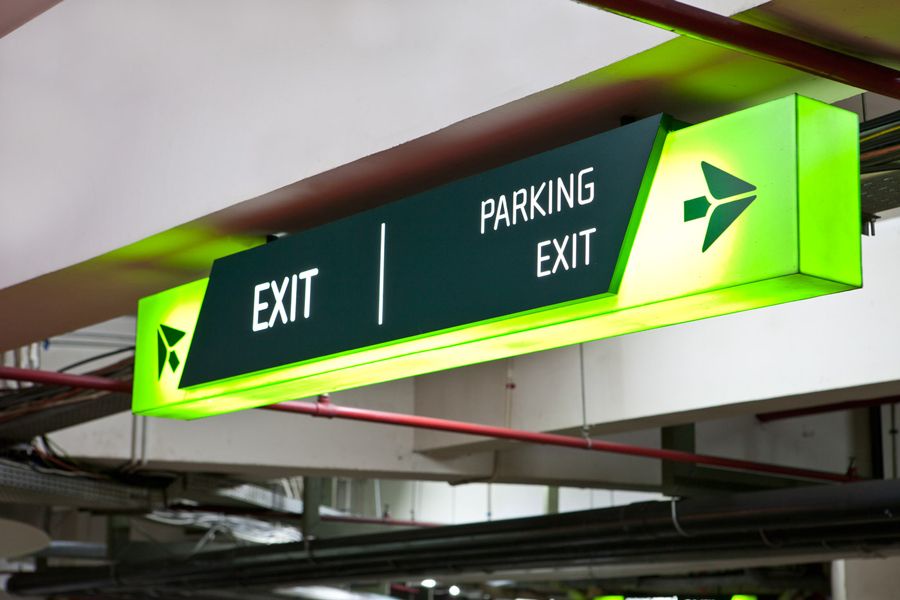Healthcare facilities are places of healing and care, and the environment within them plays a crucial role in patient experiences. One often overlooked aspect that significantly contributes to this experience is healthcare signage. In this guide, we'll explore the importance of healthcare signage, its role in creating a comfortable and inclusive environment, and best practices that healthcare facilities can adopt. Whether you're a patient, a caregiver, or simply curious about the healthcare setting, let's delve into the world of healthcare signage.
The Importance of Healthcare Signage: Beyond Directional Guidance
Healthcare signage is more than just arrows pointing to different departments; it's a critical element in shaping the overall environment of a healthcare facility. Here's why it holds such significance:
-
Patient Navigation: The primary function of healthcare signage is to guide patients and visitors through the facility. Clear and concise signage helps reduce stress and anxiety associated with navigating an unfamiliar environment.
-
Information Accessibility: Healthcare signage provides essential information such as the location of various departments, restrooms, emergency exits, and amenities. Easy access to this information enhances the overall patient experience.
-
Compliance and Safety: In a healthcare setting, compliance with safety regulations is paramount. Signage communicates important safety information, such as the location of fire exits, emergency procedures, and restricted areas.
-
Branding and Identity: Healthcare signage is an extension of the facility's brand identity. Consistent use of colors, logos, and design elements helps reinforce the facility's brand and creates a cohesive visual experience.
Creating an Inclusive Environment: Accessible Signage
Inclusivity is a key consideration in healthcare design, and signage plays a vital role in ensuring that everyone, regardless of abilities, can navigate the facility comfortably. Here are best practices for creating accessible signage:
-
Clear Fonts and Contrast: Use clear, easy-to-read fonts with high contrast between text and background. This is especially important for individuals with visual impairments.
-
Braille and Tactile Signage: Incorporate Braille and tactile elements into signage, especially for room numbers, restroom signs, and important directions. This provides essential information for individuals with visual impairments.
-
Accessible Heights: Install signage at accessible heights, considering individuals who may be using wheelchairs or other mobility aids. This ensures that signage is easily visible and within reach.
-
Pictograms and Icons: Utilize universally understood pictograms and icons to convey information. This benefits individuals with diverse linguistic backgrounds and those who may have difficulty reading text.
laser hair removal
Understanding the local context is crucial when implementing healthcare signage, and signage manufacturers in Delhi NCR play a pivotal role in this regard. These manufacturers have a deep understanding of the local healthcare landscape and can tailor signage solutions to meet the specific needs of the diverse population in the region. Collaborating with them ensures that healthcare facilities not only meet regulatory requirements but also cater to the unique characteristics of Delhi's community.
Best Practices for Healthcare Signage: A Patient-Centric Approach
In healthcare, a patient-centric approach is essential, and signage is no exception. Here are best practices for creating patient-friendly healthcare signage:
-
Clear Departmental Signage: Clearly label different departments and clinics with large, readable signage. Use consistent and easily distinguishable colors to aid in quick identification.
-
Interactive Wayfinding Kiosks: Install interactive wayfinding kiosks in key areas. These digital displays can provide step-by-step directions, information about wait times, and even display relevant health education materials.
-
Patient Room Signage: Ensure that patient rooms are clearly labeled with room numbers and other pertinent information. This helps medical staff, visitors, and patients easily locate specific rooms.
-
Emergency Signage: Clearly mark emergency exits and routes with illuminated signage. Include instructions on emergency procedures to ensure a swift and safe response in critical situations.
Comfort and Aesthetics: Balancing Functionality and Atmosphere
While functionality is paramount in healthcare signage, aesthetics play a role in creating a welcoming and comfortable environment. Here's how healthcare facilities can balance functionality and atmosphere:
-
Use Calming Colors: Incorporate calming and soothing colors in healthcare signage to create a comfortable atmosphere. Soft blues and greens, for example, are known for their calming effects.
-
Artistic Elements: Integrate artistic elements into signage design, such as subtle patterns or graphics. This adds a touch of warmth and personalization to the healthcare environment.
-
Consider Ambient Lighting: Pay attention to ambient lighting around signage. Well-lit areas not only enhance visibility but also contribute to the overall ambiance of the space.
-
Well-Designed Directories: Install well-designed directories at key entrances. These can provide an overview of the facility layout and help visitors orient themselves before navigating through the facility.
The Local Touch: Signage Manufacturers in Delhi NCR
In a city as diverse as Delhi, incorporating local insights into healthcare signage is invaluable. Signage manufacturers in Delhi NCR bring a nuanced understanding of the local culture, language preferences, and visual aesthetics. Collaborating with them ensures that healthcare signage is not only functional but also resonates with the unique characteristics of Delhi's community.
Conclusion: Nurturing Healing Environments
In conclusion, healthcare signage is a silent yet powerful element that contributes to the nurturing of healing environments. Beyond its directional role, healthcare signage shapes the overall experience for patients, visitors, and healthcare professionals. From creating accessible signage to incorporating comforting aesthetics, every detail matters. Working hand-in-hand with signage manufacturers in Delhi NCR allows healthcare facilities to craft signage solutions that are not only functional and compliant but also reflective of the cultural nuances and preferences of the local community. In the world of healthcare, where comfort and inclusivity are paramount, effective signage becomes a beacon of care and support. Here's to nurturing healing environments through thoughtful and patient-centric healthcare signage.


No comments yet